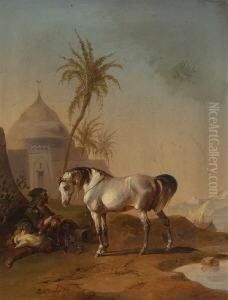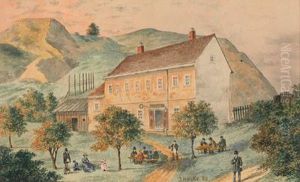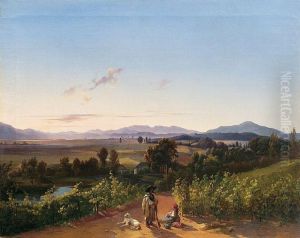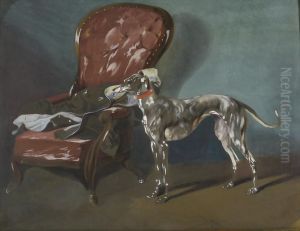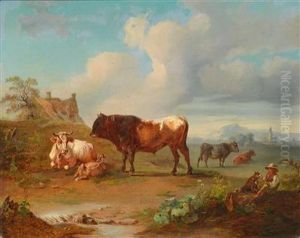Josef Heicke Paintings
Josef Heicke was an Austrian painter who was born on August 19, 1811, in Vienna. Known for his detailed landscapes and cityscapes, Heicke's work reflects the Biedermeier period's emphasis on portraying the natural world and the burgeoning middle class's leisure activities. Although not as widely recognized as some of his contemporaries, Heicke contributed significantly to the Austrian art scene during the first half of the 19th century.
Heicke received his artistic training at the Academy of Fine Arts Vienna, which was a prominent institution for fostering artistic talent in the Austrian Empire. During his time at the academy, he was influenced by the teachings of landscape painters of the time, which is evident in his attention to detail and the atmospheric quality of his paintings.
After completing his studies, Heicke worked extensively throughout Austria, capturing the charm of its rural landscapes, the grandeur of the Alps, and the everyday life of its inhabitants. He had a particular talent for depicting the interplay of light and shadow, which brought a sense of realism and vitality to his paintings. Heicke's works were appreciated for their romantic but grounded representation of the Austrian countryside and urban locales.
Despite his skills and contributions to the genre of landscape painting, Josef Heicke did not gain the same level of fame as some of his peers. His works, however, were still sought after by art collectors and enthusiasts of the period. Heicke's paintings can be seen as historical documents as well, offering insights into the settings and moods of the Biedermeier period in Austria.
Josef Heicke's life and career were cut short when he died on December 16, 1861, in Vienna. Although he passed away at the relatively young age of 50, his artistic legacy continued. Today, his works are considered valuable for their technical merit and historical significance, providing a window into the aesthetic and cultural sensibilities of 19th-century Austria.
